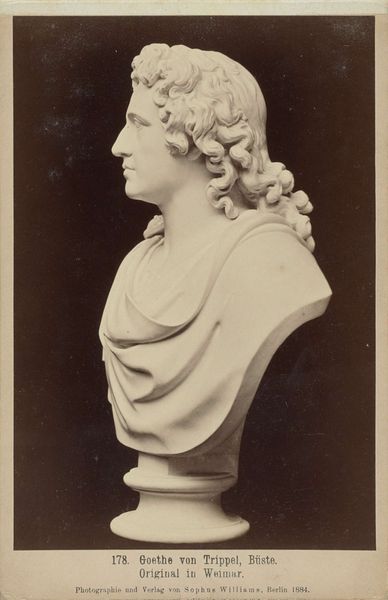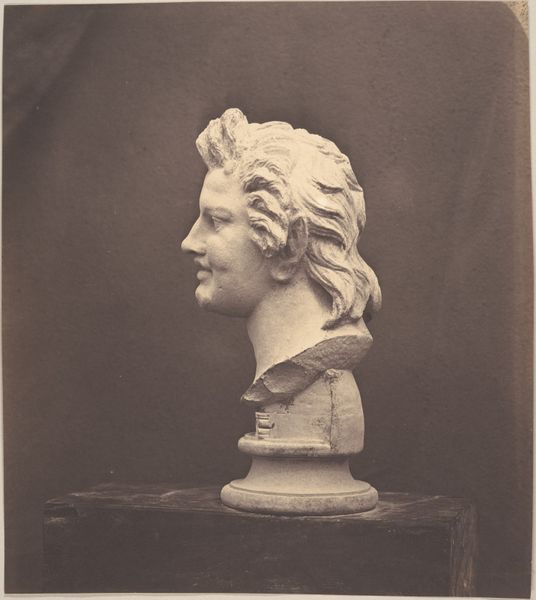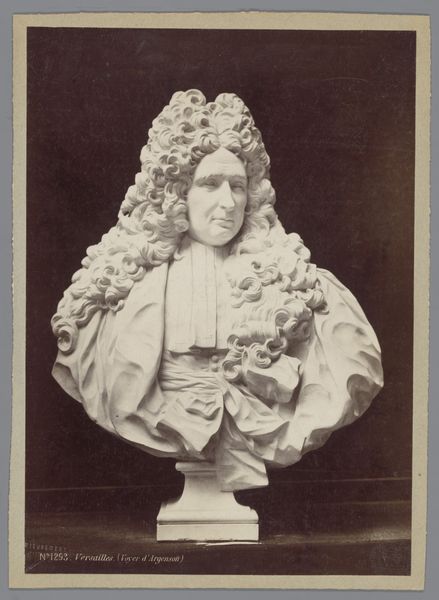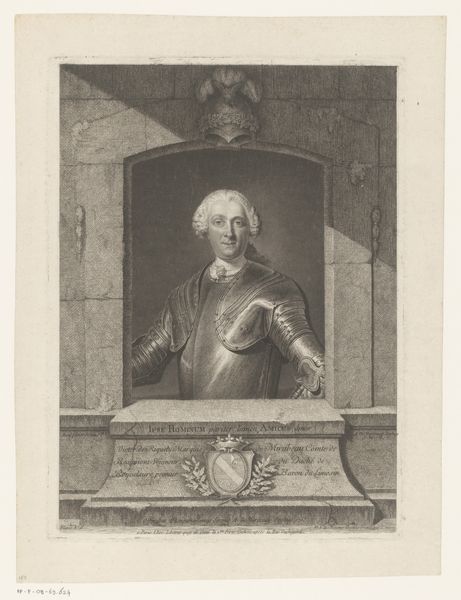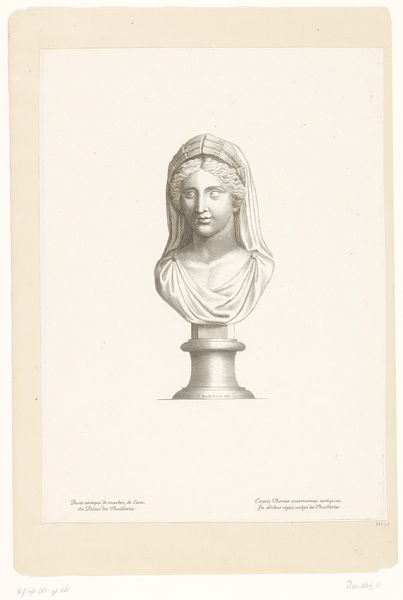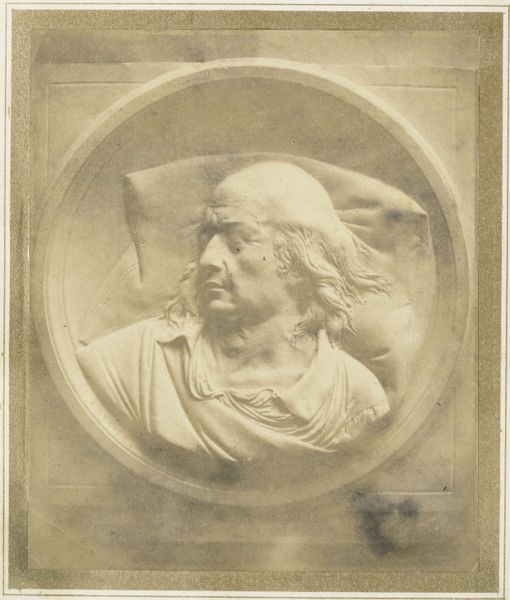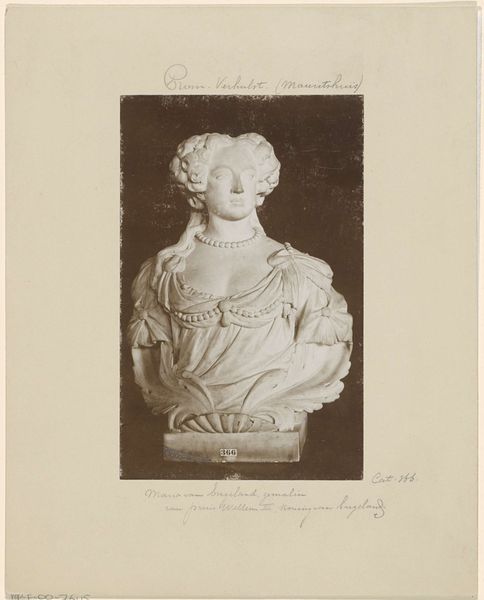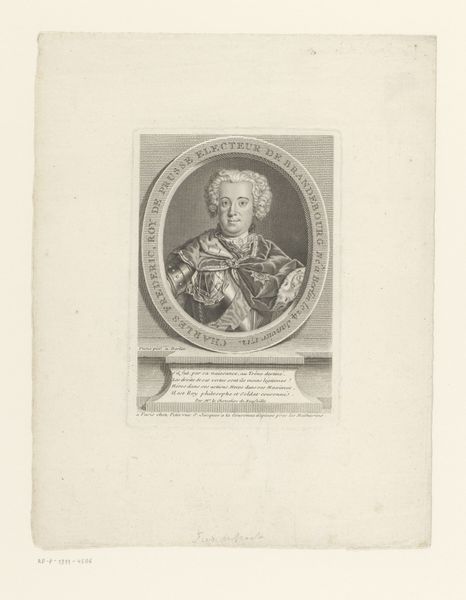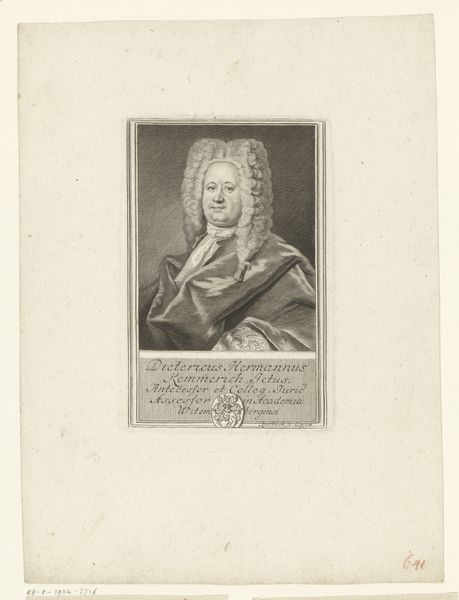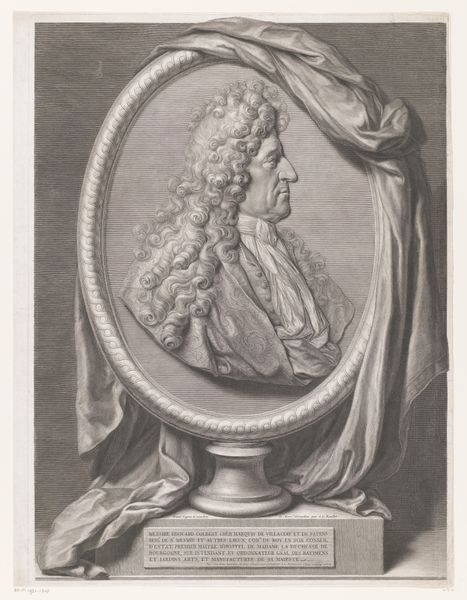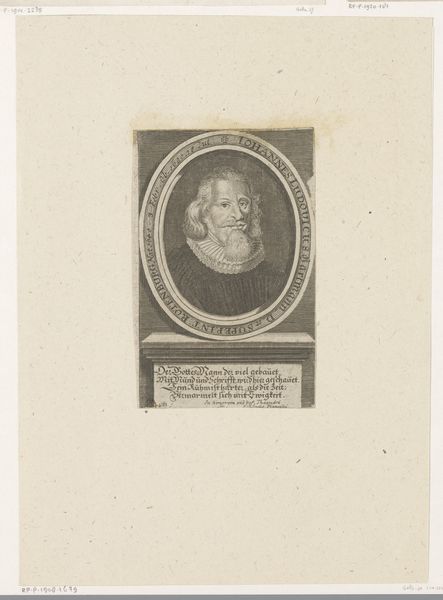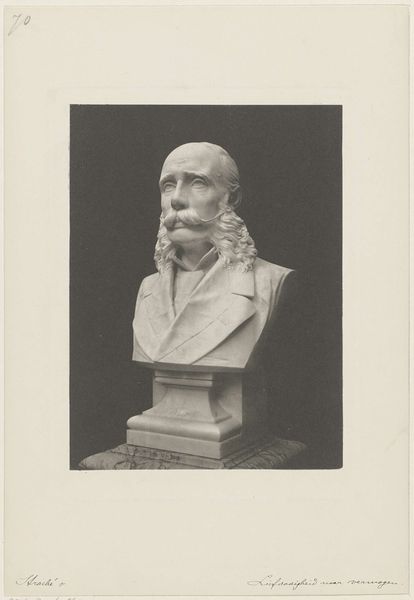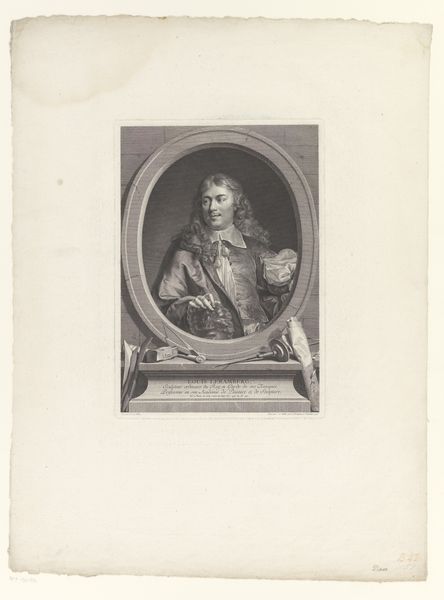
photography, sculpture
#
portrait
#
photography
#
sculpture
Dimensions: height 188 mm, width 125 mm
Copyright: Rijks Museum: Open Domain
Curator: This is a photograph of a sculpture called *Buste van Willem III, prins van Oranje,* placing it somewhere between 1850 and 1930. It’s currently housed right here at the Rijksmuseum. Editor: The first thing I notice is the ghostly pallor of the figure. It reads to me as almost hyperreal – like an echo of royal power preserved, more like an artifact than art. Curator: Yes, it's a striking image, especially when you consider William III’s historical significance. Think about it - here’s a bust of a ruler embodying stability and authority, reproduced through photography, a technology that was still quite new and also tied to notions of documentation and truth. Editor: Interesting. Because I look at the process itself and think about labor. Somebody, presumably a sculptor, crafted the original form by hand. The anonymous photographer then, using equipment that was likely cumbersome and requiring specialized knowledge of chemical processes, created a copy. A layered material record is on display here. Curator: That tension between handcraft and mechanical reproduction really underscores the shifting social perception of power and artistry. Note his armor, softened into ornamental display – the weight of his rule transformed into aesthetic objects for consumption and memory. William becomes not just a man, but a potent cultural symbol. Editor: The sculpture itself looks like it has signs of age. Then it was recorded with the sharp lines and textures in a medium still grappling with reproducibility on a mass scale, making it a desirable piece. I mean, think of the chemistry involved, the paper it's printed on; these materials degrade. We can trace changing social values just in this picture! Curator: And the way this image would have circulated, shaping perceptions and collective memory of William, creating an ongoing visual narrative across generations... it’s remarkable. Even now, it causes me to pause and reflect upon our notions of historical representation. Editor: Precisely. What remains most captivating is understanding the work as less about this long-dead king but what we still imbue on him.
Comments
No comments
Be the first to comment and join the conversation on the ultimate creative platform.

